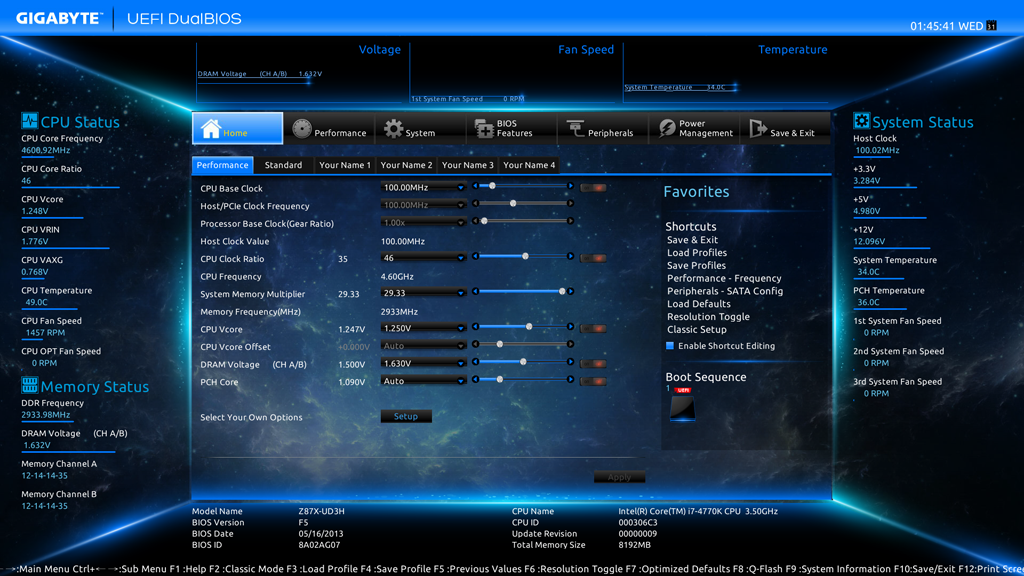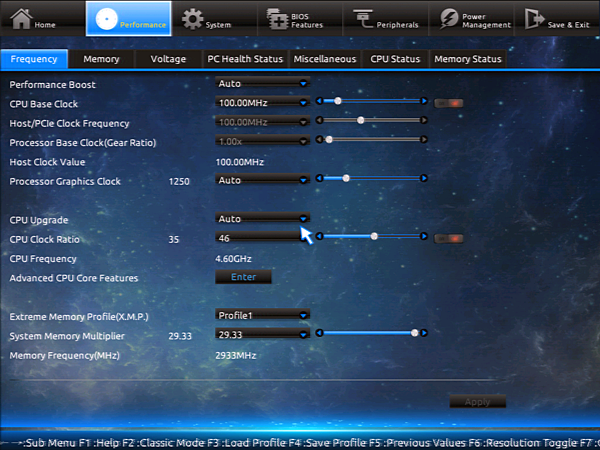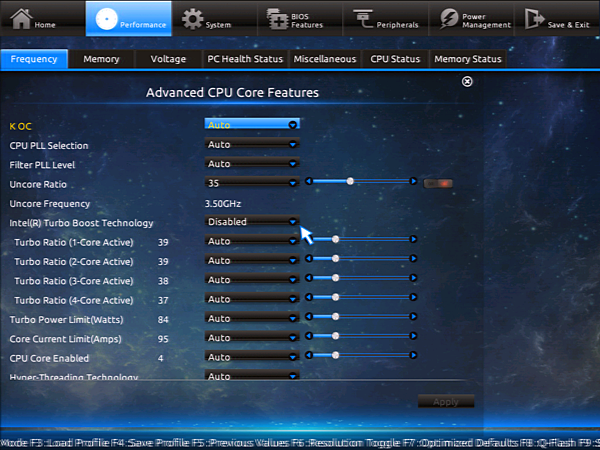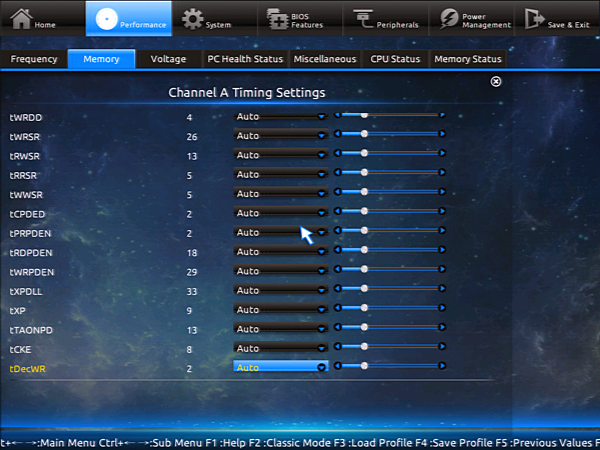Fast And Cheap? Five Sub-$160 Z87 Motherboards For Enthusiasts
Intel’s Haswell architecture has mainstream leanings. And yet some of the motherboards out there are really high-end. Today we're looking at five platforms under the $160 mark that hopefully put some value back into being an enthusiast.
Z87X-UD3H Firmware
Why you can trust Tom's Hardware
Gigabyte began teasing its user-configurable UEFI even before the Z87 launch, but hasn't yet produced a firmware-specific video walk-through like Asus' to show off the changes. Z87X-UD3H does allow screenshots though, so I grabbed this one to show its default start page:
All of the basic overclocking controls are accessible from the default home page, and a button at the bottom of that page allows users to add items from other menus and subtract items from the default menu. Users who prefer large fonts can also use the Resolution Toggle key (F7) to expand the center settings menu to full screen.
Unwilling to settle for basic controls, we jumped straight to the Performance menu and toggled in for a tighter screen shot. The Frequency menu provides base clock and multiplier controls for the CPU core, integrated graphics, and DRAM. XMP mode is supported here, as well as from the DRAM menu. We reached 4.7 GHz at 1.3 V and 4.6 GHz at 1.25 V.
Gigabyte still uses the term “Uncore Ratio” for portions of the CPU that ASRock/Asus now call “Cache Ratio” and Biostar calls “Ring Bus Frequency”. Because this ratio affects many of the same items formerly referred to as the uncore, I’m satisfied with Gigabyte’s response.
Because memory clock and XMP mode can both be set from the frequency menu, the DRAM menu is really only needed to access timings. Switching from Auto to Quick timing mode allows both channels to be set simultaneously.



Primary, secondary, and tertiary timings are individually switchable between automatic and manual configuration. After selecting XMP Profile 1, the Z87X-UD3H set our DDR3-3000 to its rated timings at DDR3-2933. We weren’t able to bump it any higher at its rated voltage.


Gigabyte still spreads voltage settings across an unwieldy number of menus, with a main Voltage menu that serves no other function than to link submenus.



Remember that we just said we couldn’t overclock past DDR3-2933 at the memory’s rated voltage? The Z87X-UD3H covertly adds 20 mV, so its 1.630 V setting provided an actual 1.65 V.
Get Tom's Hardware's best news and in-depth reviews, straight to your inbox.






